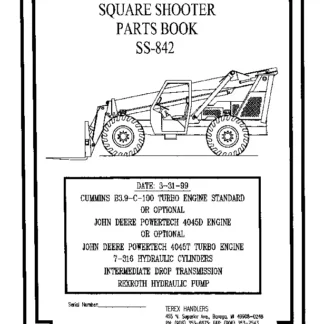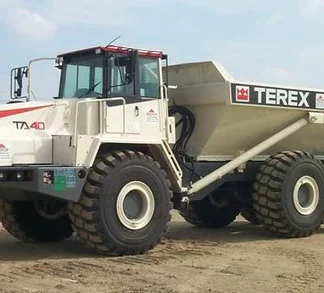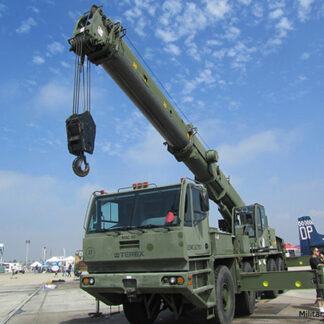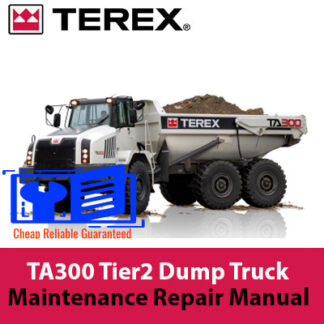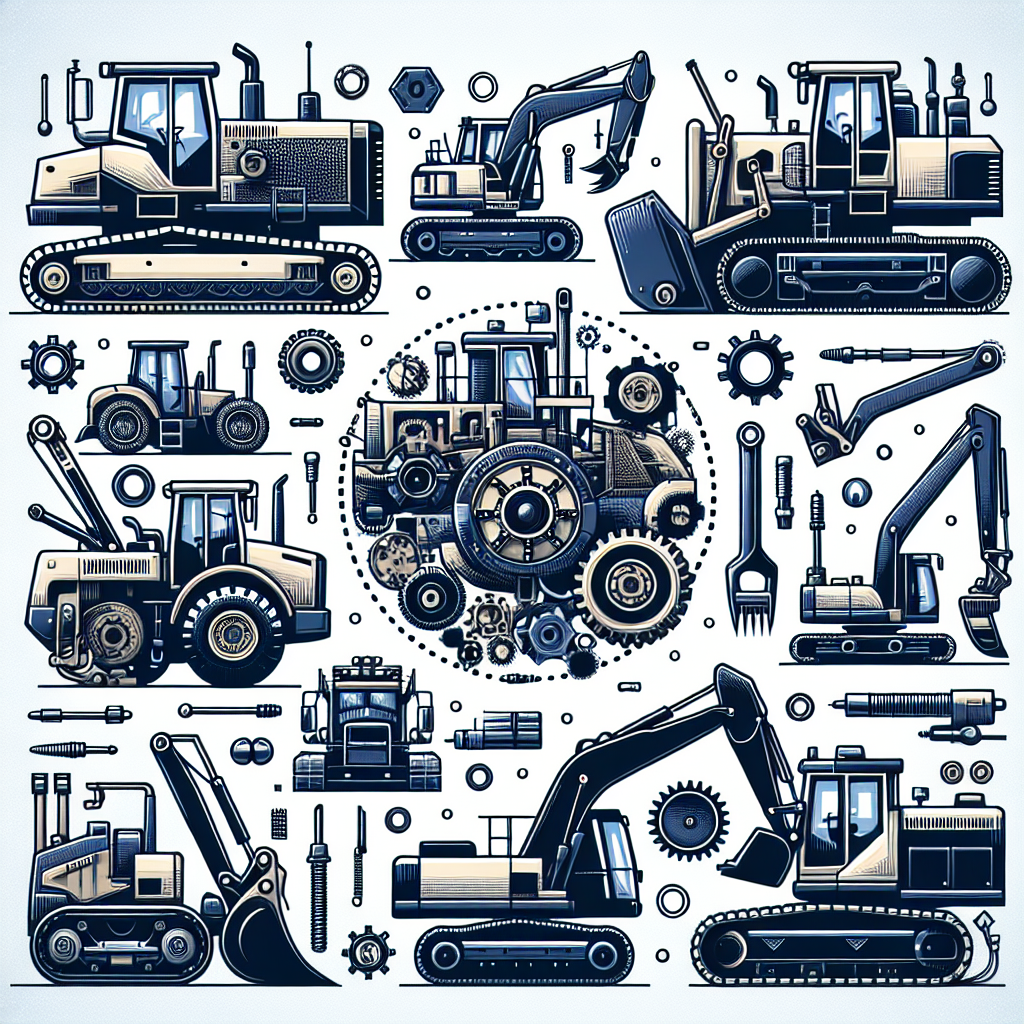
Terex is a prominent name in the heavy machinery industry, known for its versatile range of equipment that serves a variety of sectors. From all-terrain models to mobile and industrial machines, Terex equipment is engineered for performance and durability. However, like any complex machinery, these powerful tools require regular maintenance and occasional repairs to ensure optimal functionality. In this article, we delve into understanding the different variants of Terex equipment and explore common repair needs for each type. For those looking for detailed repair guides, Terex Manuals can be a valuable resource.
Understanding Terex Equipment Variants
Terex manufactures a broad spectrum of heavy machinery designed to meet the needs of diverse industries. The company’s equipment portfolio includes all-terrain cranes, mobile cranes, and a variety of industrial machines. All-terrain models are engineered to handle challenging landscapes, offering robust performance on both rough and smooth surfaces. Mobile equipment is designed for ease of transportation and versatility, making it ideal for projects that require frequent relocation. Meanwhile, industrial equipment from Terex is built for heavy-duty tasks, often used in manufacturing and construction environments where reliability is crucial.
Each category of Terex equipment is tailored to specific operational requirements. For instance, all-terrain cranes are designed with advanced suspension systems and powerful engines to navigate difficult terrains while maintaining stability and load capacity. Mobile equipment, such as tower cranes and telehandlers, is optimized for flexibility and ease of setup, allowing for efficient operation in various locations. Industrial equipment includes a range of machinery from crushers to material handlers, each built to withstand the rigors of continuous use in demanding environments.
Understanding these variants is essential for selecting the right equipment for your needs and ensuring that it is used correctly. Proper usage not only enhances performance but also extends the lifespan of the machinery. Familiarizing yourself with the specific features and capabilities of each type can lead to more informed decisions when it comes to operation and maintenance.
For those seeking comprehensive information on the specifications and operational guidelines for Terex equipment, Terex Manuals provides a wealth of resources. These manuals are invaluable for operators and maintenance personnel looking to optimize the use and upkeep of their machinery.
Common Repairs for All-Terrain Models
All-terrain models from Terex are engineered to perform under challenging conditions, but they are not immune to wear and tear. Common repairs for these models often involve addressing issues related to the hydraulic systems, which are critical for crane operation. Hydraulic leaks, for instance, can lead to reduced lifting capacity and should be addressed promptly to prevent further damage. Regular inspection of hoses and seals is crucial to maintaining the integrity of the hydraulic system.
Another common repair need for all-terrain models is related to the suspension system. Given the rough terrains these machines operate on, the suspension components can experience significant stress, leading to issues such as misalignment or wear of suspension parts. Regular maintenance checks and timely replacement of worn components can prevent costly repairs and downtime.
Electrical system issues are also prevalent in all-terrain models. Problems such as faulty wiring or sensor failures can impact the machine’s operational efficiency and safety. Routine electrical system diagnostics can help identify potential issues before they escalate into more serious problems. Ensuring that the electrical components are well-maintained is vital for the overall performance of the equipment.
For operators and maintenance teams looking to carry out repairs, Terex Manuals offers detailed repair guides and troubleshooting tips that can assist in identifying and resolving common issues effectively.
Mobile Equipment: Maintenance and Fixes
Mobile equipment from Terex is designed for versatility and ease of transport, but this mobility can also lead to unique maintenance challenges. One of the most common repair needs for mobile equipment is related to the tires and track systems. Frequent relocation and operation on various surfaces can cause tire wear or track misalignment. Regular inspection and maintenance of these components are essential to ensure safe and efficient operation.
The engine and transmission systems in mobile equipment are also crucial areas that require regular attention. Given the demands of frequent movement and operation, these systems can experience wear over time. Routine engine diagnostics and timely oil changes are necessary to keep the equipment running smoothly and to prevent potential breakdowns.
Another common issue with mobile equipment is related to the boom and lifting mechanisms. These components are subject to significant stress during operation, leading to potential issues such as metal fatigue or joint wear. Regular lubrication and inspection of these parts can help extend their lifespan and prevent operational failures.
For those involved in the maintenance of mobile equipment, accessing the right resources is key. Terex Manuals provides comprehensive guides that cover maintenance procedures and common fixes, making it easier for teams to keep their equipment in top condition.
Industrial Equipment: Specialized Repair Needs
Terex’s industrial equipment is built for heavy-duty applications, but the demanding environments in which they operate can lead to specialized repair needs. One of the most critical areas for maintenance is the wear and tear of components that are constantly in contact with materials, such as crushers and conveyors. Regular inspection and replacement of wear parts are necessary to maintain operational efficiency and prevent costly downtime.
The hydraulic systems in industrial equipment are also prone to issues, given their extensive use in powering various functions. Hydraulic fluid leaks or pump failures can significantly impact performance. Conducting regular hydraulic system checks and ensuring that all components are in good condition can mitigate these risks.
Industrial equipment also requires attention to its structural components, which can be subject to stress and fatigue over time. Regular inspection for signs of metal fatigue or structural damage is essential, as these issues can compromise the safety and effectiveness of the machinery.
For operators and maintenance personnel seeking detailed repair instructions and maintenance schedules, Terex Manuals offers a range of manuals that provide valuable insights into the upkeep of industrial equipment. These resources can be instrumental in addressing specialized repair needs efficiently.
Maintaining and repairing Terex equipment, whether it be all-terrain, mobile, or industrial, is crucial for ensuring its longevity and performance. Understanding the unique characteristics and common repair needs of each type of equipment can significantly reduce downtime and enhance operational efficiency. By utilizing resources such as Terex Manuals, operators and maintenance teams can access the necessary information to perform effective repairs and maintenance. Regular attention to the condition of Terex machinery not only safeguards the investment but also ensures that the equipment continues to meet the demanding needs of various industries.

